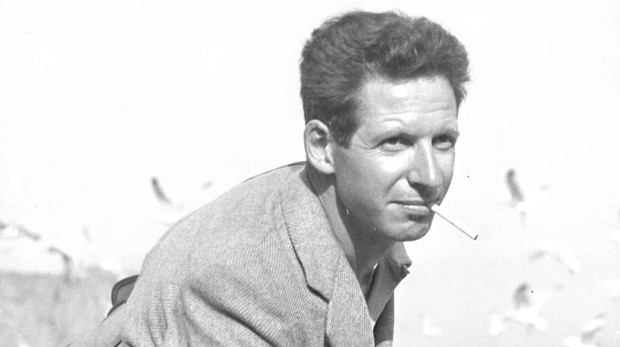
Herbert Matter was a celebrated American based graphic designer and photographer of Swiss origin. He is best known for his pioneering use of photomontage in commercial art. His innovative, iconic and experimental work helped set the trend for twentieth century graphic design. He is deemed the driving force behind the practice of modern art that left indelible marks on common perception of graphic art.
Born on April 25, 1907, Herbert Matter grew up in Engelberg, Switzerland. From 1925 until 1927 he attended École des Beaux-Arts in Geneva where he studied painting. Then he went to Paris to study the same subject at the Académie Moderne where he met Fernand Léger and Amédée Ozenfant, who taught him. Subsequent to his studies he freelanced as a graphic designer and worked with several renowned firms and artists including Le Corbusier, Deberny & Peignot type foundry. During early 1930s he provided his services at an art journal, entitled Arts et Métiers Graphiques. Matter had an opportunity to meet Adolphe Mouron Cassandre while he was in Paris. He collaborated with him on several poster designing projects.
In 1932, Matter returned to Zurich, Switzerland and began to design a celebrated series of tourism advertising posters. The posters were for the Swiss Tourism Office. A few years later he relocated to United States where he was appointed photographer by legendary art director Alexey Brodovitch. He worked for several leading magazines including Harper’s Baazar, Town and Country and Vogue. He also worked with the California practice of Charles and Ray Eames. Soon after, he began to serve at Knoll Associates International. He designed the logo with the big K for Knoll Associates as well as numerous advertisements and catalogues. Moreover, Matter also took up teaching position at Yale University where he was a professor of photography during 1950s to 1970s. The Solomon R. Guggenheim Museum sought his expertise as design consultant. From 1958 to 1968, he served at the Museum of Fine Arts in Houston. During the Second World War, the government of United States commissioned Matter to design propaganda posters persuading civilians to join army.
Matter’s work is recognized for its innovative visual approach. His graphic work ingeniously fused the stringency of Swiss style with American pop culture. Matter exploited every method available to meticulously achieve his vision of texture, light and form. His techniques included manipulation of the negative, cropping, retouching, light drawing and enlarging. The fresh form he sought in his still lifes, portraits, nudes and landscapes were the result of his unique methods. In 1952, for the Museum of Modern Art, Matter directed a film on his friend Alexander Calder. His wife Mercedes was the chief founder of the New York Studio School and her father was a modernist painter Arthur Beecher Carles.
He was lauded by another noted designer Paul Rand as he called Matter the least pompous and pretentious artist of all. One of the aims of his creative life was his aspiration to close the gap between what is categorized as fine arts and applied art these days. He had close association with the notable painters and photographers such as Willem de Kooning, Alberto Giacometti, Jackson Pollock and Robert Frank. In fact, he paid visit to Alberto Giacometti at his studio in Paris which was followed by his taking multiple photographs on Giacometti’s work and personal life. Later he transformed his research on Giacometti into a book. Herbert Matter passed away in the spring of 1984 in Southampton, New York.

